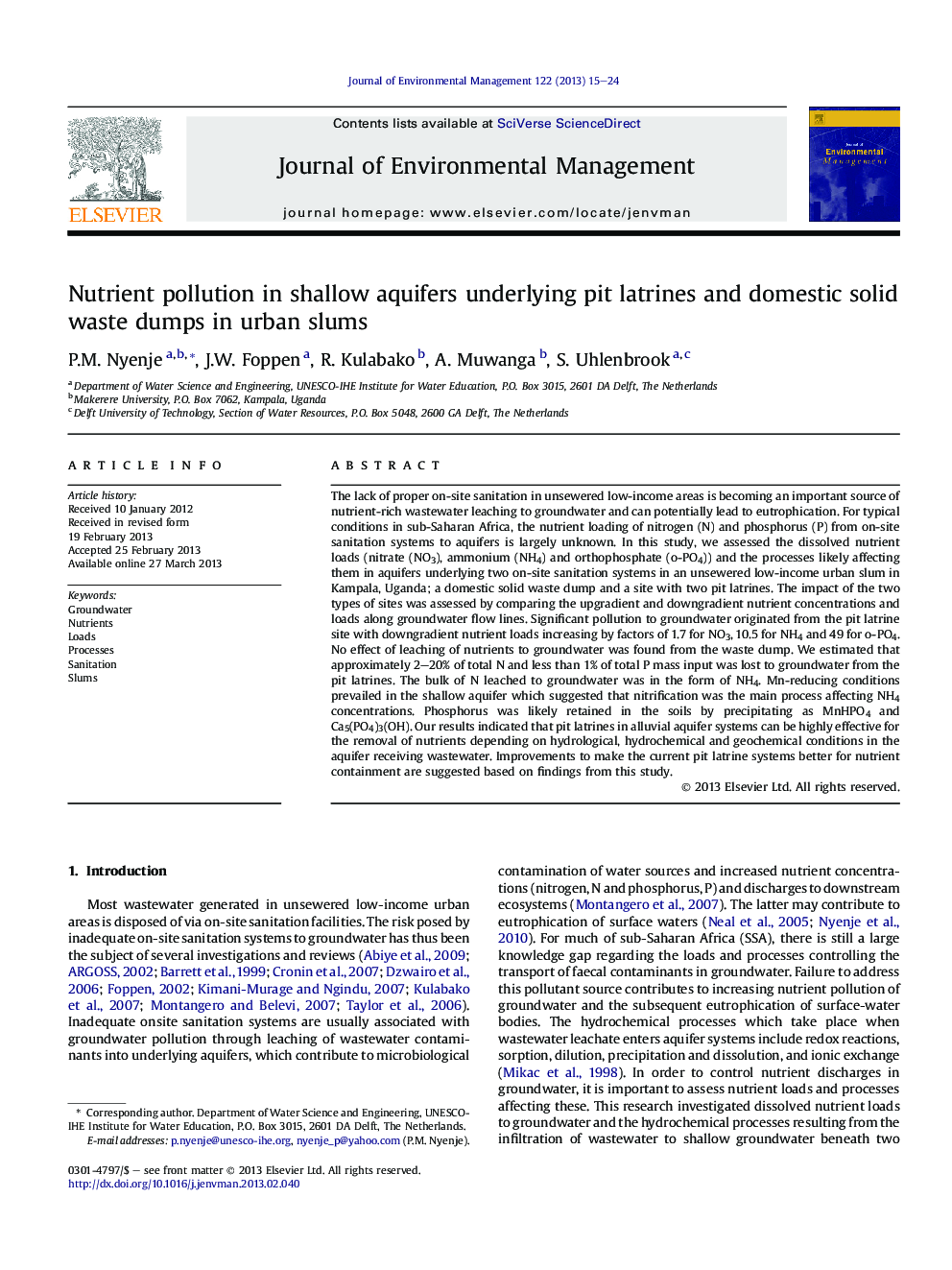| کد مقاله | کد نشریه | سال انتشار | مقاله انگلیسی | نسخه تمام متن |
|---|---|---|---|---|
| 1056331 | 1485290 | 2013 | 10 صفحه PDF | دانلود رایگان |

The lack of proper on-site sanitation in unsewered low-income areas is becoming an important source of nutrient-rich wastewater leaching to groundwater and can potentially lead to eutrophication. For typical conditions in sub-Saharan Africa, the nutrient loading of nitrogen (N) and phosphorus (P) from on-site sanitation systems to aquifers is largely unknown. In this study, we assessed the dissolved nutrient loads (nitrate (NO3), ammonium (NH4) and orthophosphate (o-PO4)) and the processes likely affecting them in aquifers underlying two on-site sanitation systems in an unsewered low-income urban slum in Kampala, Uganda; a domestic solid waste dump and a site with two pit latrines. The impact of the two types of sites was assessed by comparing the upgradient and downgradient nutrient concentrations and loads along groundwater flow lines. Significant pollution to groundwater originated from the pit latrine site with downgradient nutrient loads increasing by factors of 1.7 for NO3, 10.5 for NH4 and 49 for o-PO4. No effect of leaching of nutrients to groundwater was found from the waste dump. We estimated that approximately 2–20% of total N and less than 1% of total P mass input was lost to groundwater from the pit latrines. The bulk of N leached to groundwater was in the form of NH4. Mn-reducing conditions prevailed in the shallow aquifer which suggested that nitrification was the main process affecting NH4 concentrations. Phosphorus was likely retained in the soils by precipitating as MnHPO4 and Ca5(PO4)3(OH). Our results indicated that pit latrines in alluvial aquifer systems can be highly effective for the removal of nutrients depending on hydrological, hydrochemical and geochemical conditions in the aquifer receiving wastewater. Improvements to make the current pit latrine systems better for nutrient containment are suggested based on findings from this study.
► We investigated groundwater pollution from pit latrines and waste dumps in slums.
► Significant pollution to groundwater originated from pit latrines.
► About 2–20% of N and <1% of P input into pit latrines was lost to groundwater.
► Phosphorus was likely regulated by precipitating with Ca and Mn ions.
► Pit latrines in alluvial aquifer systems can be effective in nutrient control.
Journal: Journal of Environmental Management - Volume 122, 15 June 2013, Pages 15–24